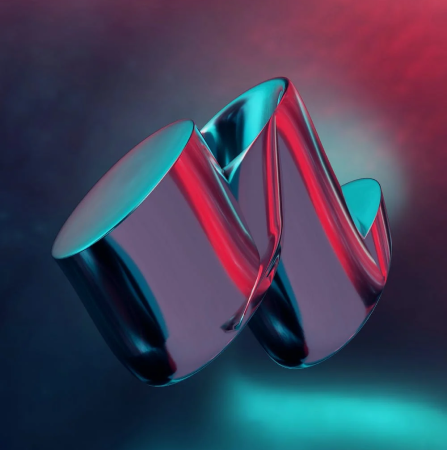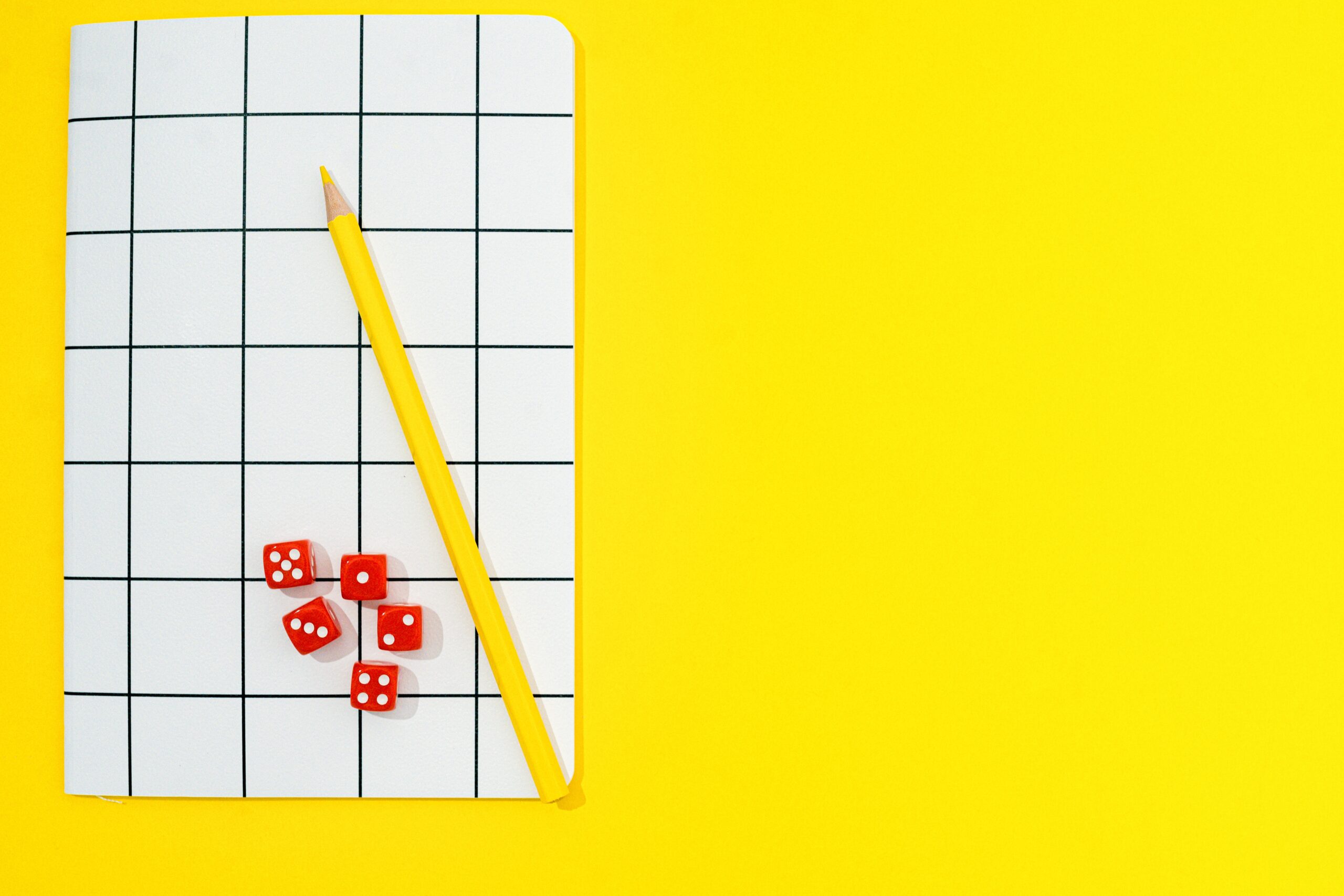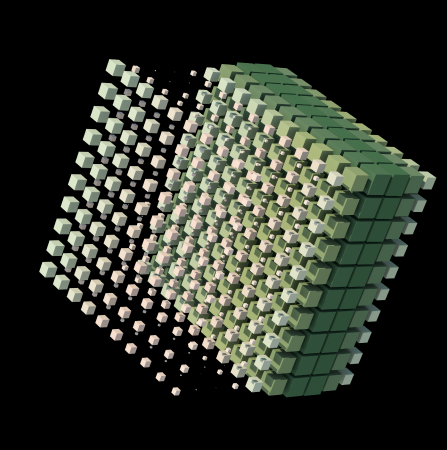A product development roadmap is a key tool in product management that helps the entire team act synchronously. It provides a clearer idea of the current product status and its development direction.
What’s a product development roadmap and who needs it
A product roadmap is a visual document that outlines the steps you plan to take to align with your product vision over time. It helps understand three key things for product development:
- the current stage or status of the product
- its development direction
- how the goals can be achieved
It reduces uncertainty about the future and helps the product team focus on the highest priority steps.
The main elements of the roadmap are:
- product development strategy and goals
- features
- timeframes
- highest priorities
- responsible for the development process
- status markers & metrics
Let’s make it visual and look ar the example of product roadmap created in Gantt – a specialized software tool for these purposes:
 Product Development Roadmap sample
Product Development Roadmap sample
How to build a product roadmap?
Regardless of the industry you future product will fit in, or the features it will have, the development of a product roadmap is quite similar. We’ll explain it to you through our experience in creating a roadmap for our client — Kör — an educational platform for drivers. The client requested the product development from scratch, so we started with the Discovery stage, which included the creation of a product roadmap.
1. Set the product goals and initiatives
Our first step was a 3-day workshop with the Kör team. Its purpose was to set the business and project goals and define the product’s functionality. It helped us understand the scope of work ahead of us.
The process of data collection included:
- A meeting of Kör Teknologi AS and all senior stakeholders including CEO, GM’s, leadership teams. The main goal: set the highest priority goals for 2021.
- Fleshing out the goals using OKR or SMART goal-setting frameworks.
- Recording and prioritizing the goals with other team members in such roadmap tools as a roadmap tool like Aha, or Trello.
We needed this data to define the roadmap themes and initiatives. So we fot together with a leadership team and prioritized goals for the next months. And created a clear and transparent overview of the goals and initiatives. Each member of the team should understand them, that’s why using OKR and SMART goal-setting frameworks is indeed useful.
As a result of our 3-day workshop, we:
- defined the client’s business and project goals
- figured out stakeholder groups and app’s user types
- determined general, management, and technical risks
- created a product roadmap
2. Set priorities and forge a vision
Multiple goals and initiatives can lead to the emergence of several products and features. In this case, you should estimate how likely the idea will help the company achieve certain goals. Then, you and a leadership team should prioritize products and features that passed the selection.
3. Take time to understand ‘what’, ‘why’, and ‘for whom’
Take a break from brainstorming feature after feature. It’s important to pay attention to the problems you are trying to solve with the product. A product vision template comes in handy in this case. It takes you back to what, why, and for whom of your product – the foundation.
4. Choose a format of the roadmap
The most popular formats of the roadmap are focus- and goal-oriented.
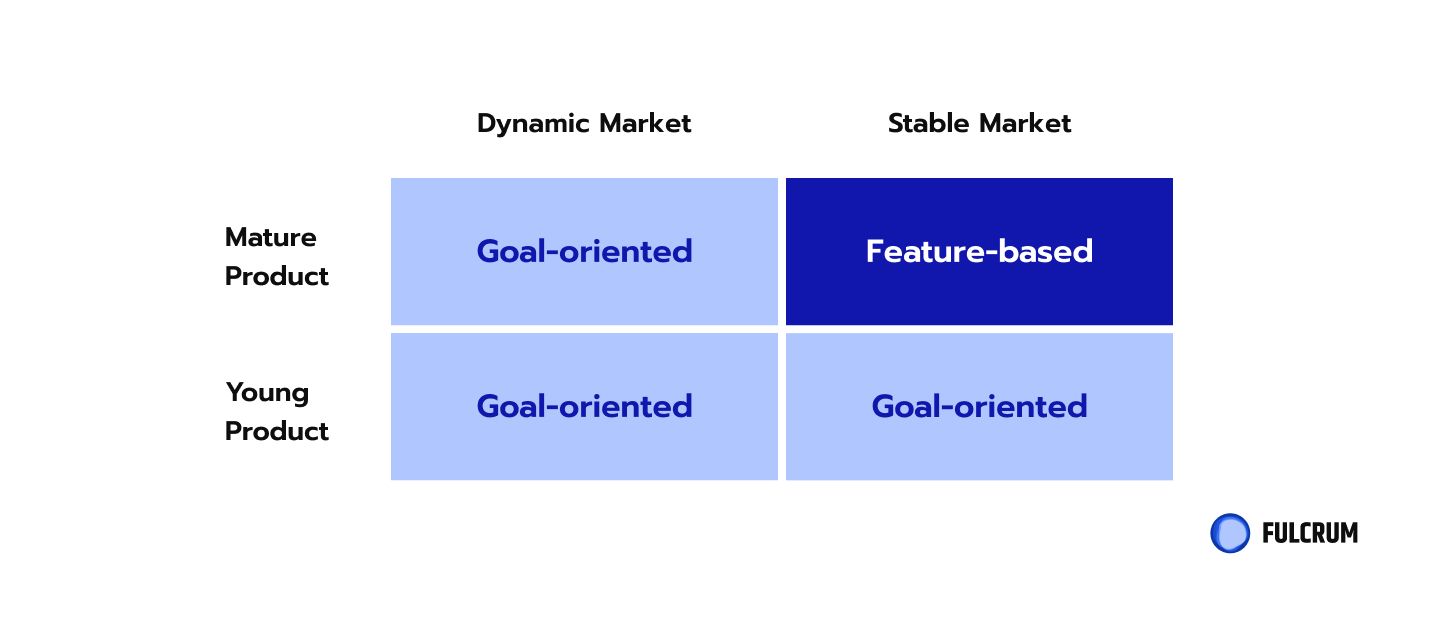
Feature-based roadmaps focus on the features of the project. Their structure is not flexible, which is a drawback. The client’s needs and the technological innovations trigger adjustments quite often. Thus, this type is more suitable in stable markets where predictions are more or less possible.
In our practice, we, therefore, use goal-oriented product roadmaps more often. They focus on the achievement of goals, from which the features are defined. In this case, the features are linked to the goals. It makes feature development clear and precise. It’s a so-called shift from discussing features to setting goals. One of the drawbacks though is that sometimes the focus is shifting from the value for the client to the value for the company.
Therefore, there are cases where we choose a feature-based approach.
5. At the finish line: create a roadmap
A workshop gave us a clear idea of the client’s business needs and the timeframes. Based on this data we created a project’s roadmap. Here is a part of it:
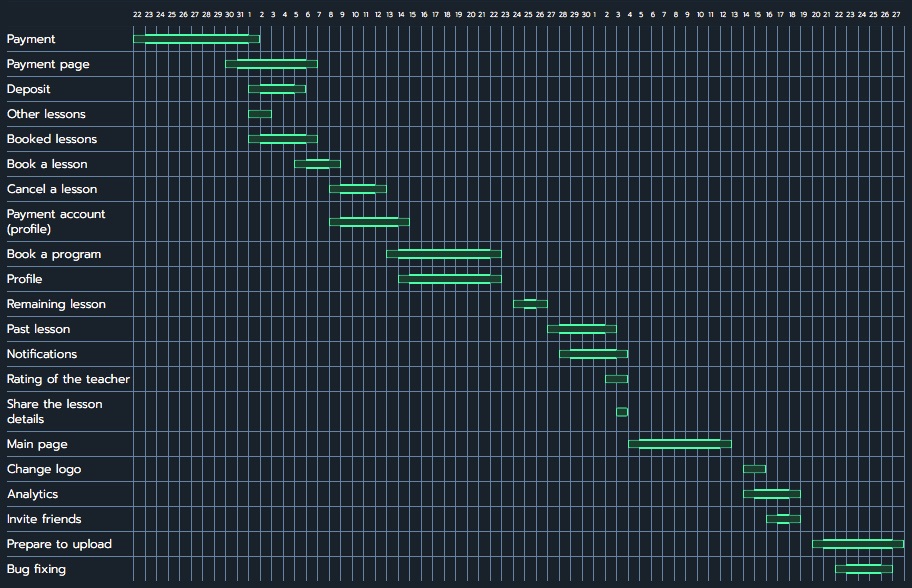
The process consisted of 3 steps:
- Splitting the products into a Feature Backlog and a Release Roadmap, as a result.
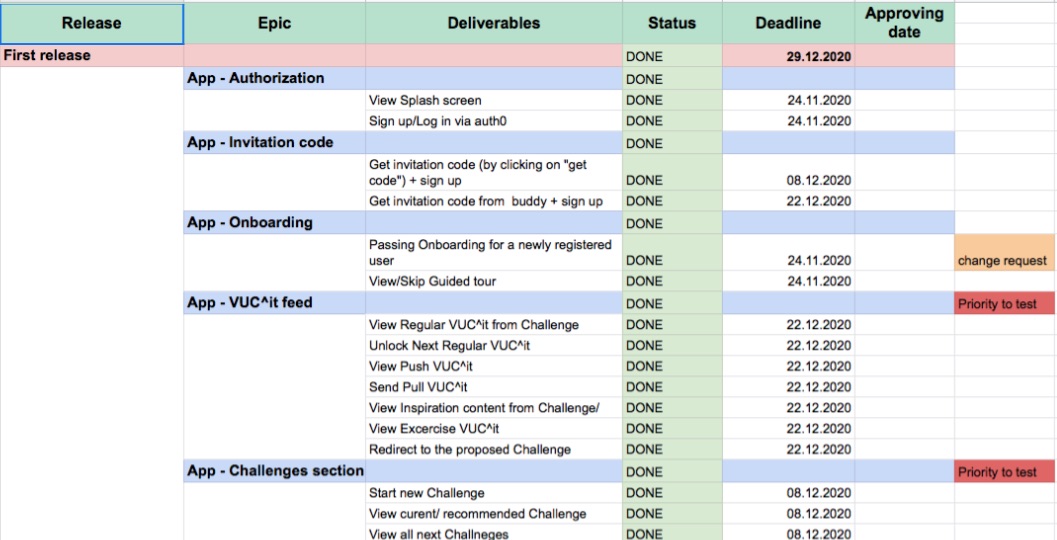 Feature Backlog sample
Feature Backlog sample
- The product manager and the delivery team split the products into feature sets. At Fulcrum, we used an Agile delivery framework.
- Breaking down work using Feature Mapping and Feature Prioritization:
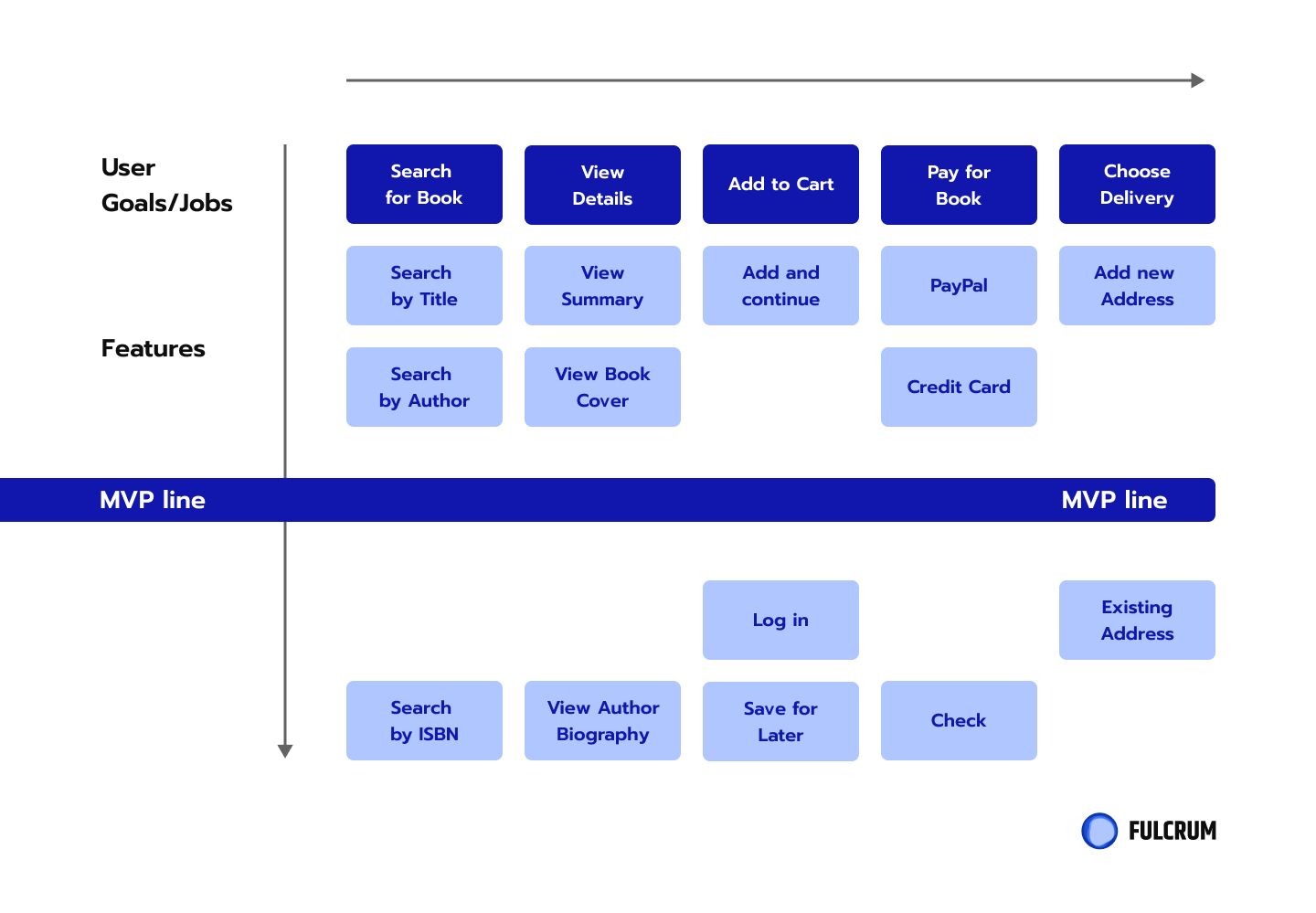
Once the Feature Backlog is created, we worked on scheduling the features to finally move to the Release Roadmap. The timeframes depend on the size of features and the human resources in the development team.
Why is it worth creating a product roadmap with Gantt Charts?
With a Gantt chart, you will prioritize and schedule the tasks of the project. The chart consists of two parts: the list of activities on the left and the timeline at the top. The bars represent certain activities. You can change their positions according to the priority. The length of the bar shows the duration, the start, and the end dates of the activity.

In other words, Gantt charts are an ideal tool for tracking the progress of the tasks. Simultaneously, they focus on small steps and show the “big picture”. Check out a customizable product roadmap sample that you can use to create your template.
Gantt charts are super user-friendly and simple. They aren’t overloaded with useless elements. So, everyone will have a clear idea of the current status of the product and the next steps in development.
Fulcrum creates Gantt charts with a great love using Instagantt software.


What’s next? Efficient roadmaps management & usage
Here are a few tips on how to use your roadmaps efficiently:
- Be objective when setting deadlines. Give your team some lead time for force majeure. Use such high-level timeframes as Q2, H1, 2021, May 2021.
- Leave a roadmap in an easy-to-reach space. Everyone involved in product development should know where to find it.
- Update the roadmap after achieving even the smallest goal.
- Review the roadmap together with your team regularly.
- Adapt it to the long-term project goals and tiny achievements.
- Be flexible to make adjustments – the roads sometimes have sharp turns.
Every idea and product influence the ROI and success of your business in the long run. Therefore, it’s important to plan every step carefully. That’s where product development roadmaps come in handy.
If you are only hatching the idea of the cool product, don’t hesitate to turn to Fulcrum Rocks, we will gladly help you turn it into reality.
FAQ Product Development Roadmap
-
What is a product roadmap in agile development?A roadmap is a detailed plan of actions on the path of development of new products or features. In agile development, it shows the amount of everyday work, timeframes but also the project's goals and priorities in the long run.
-
How to build a product development roadmap?The process of creating a roadmap consists of several stages. First, you should set product goals and initiatives, and prioritize them. During this stage, a big amount of data such as business needs, client types, stakeholder groups, possible risks must be gathered. When you split the product into features and set deadlines, you can build a roadmap using any suitable software (e.g. Gantt charts).
